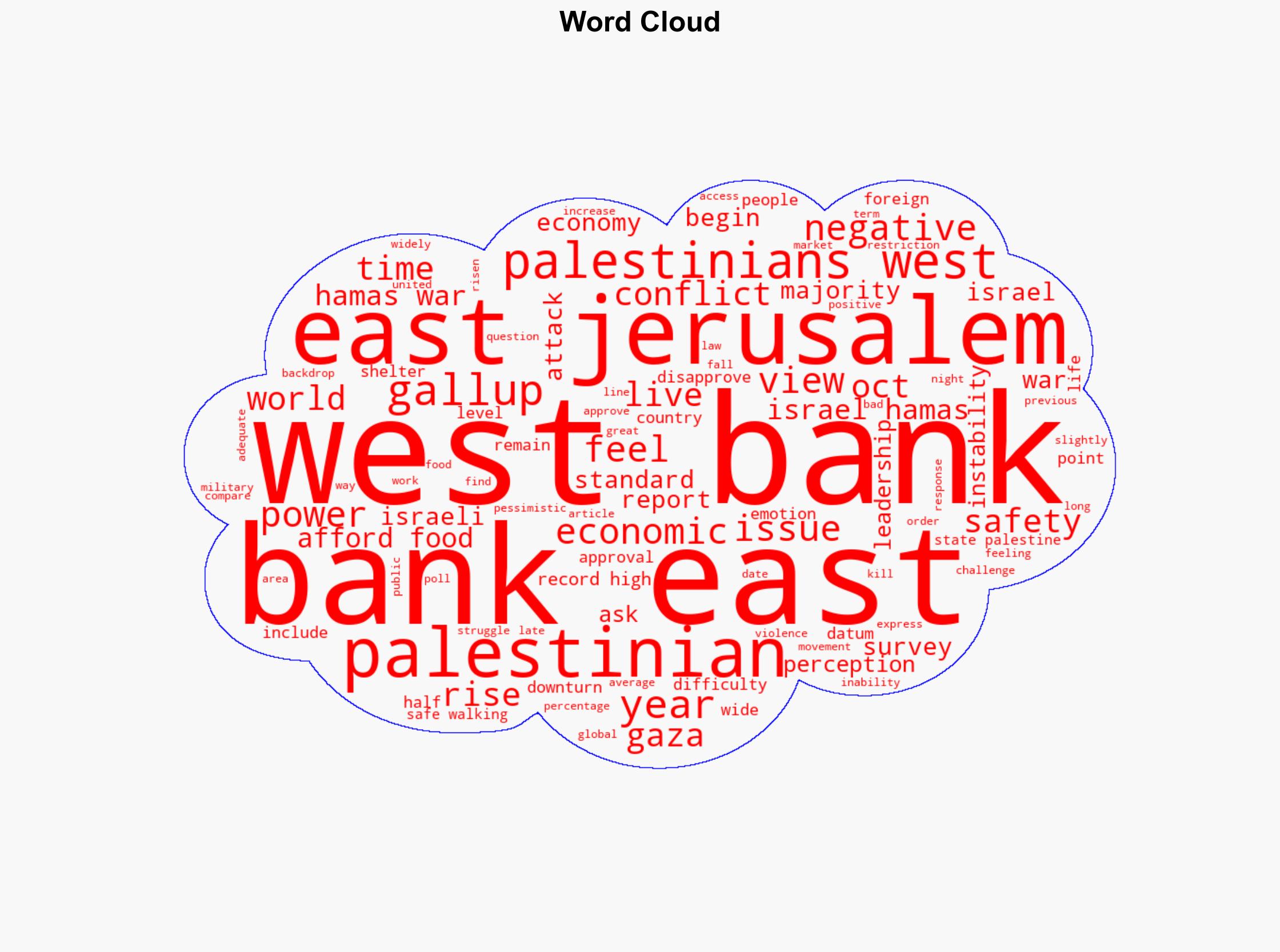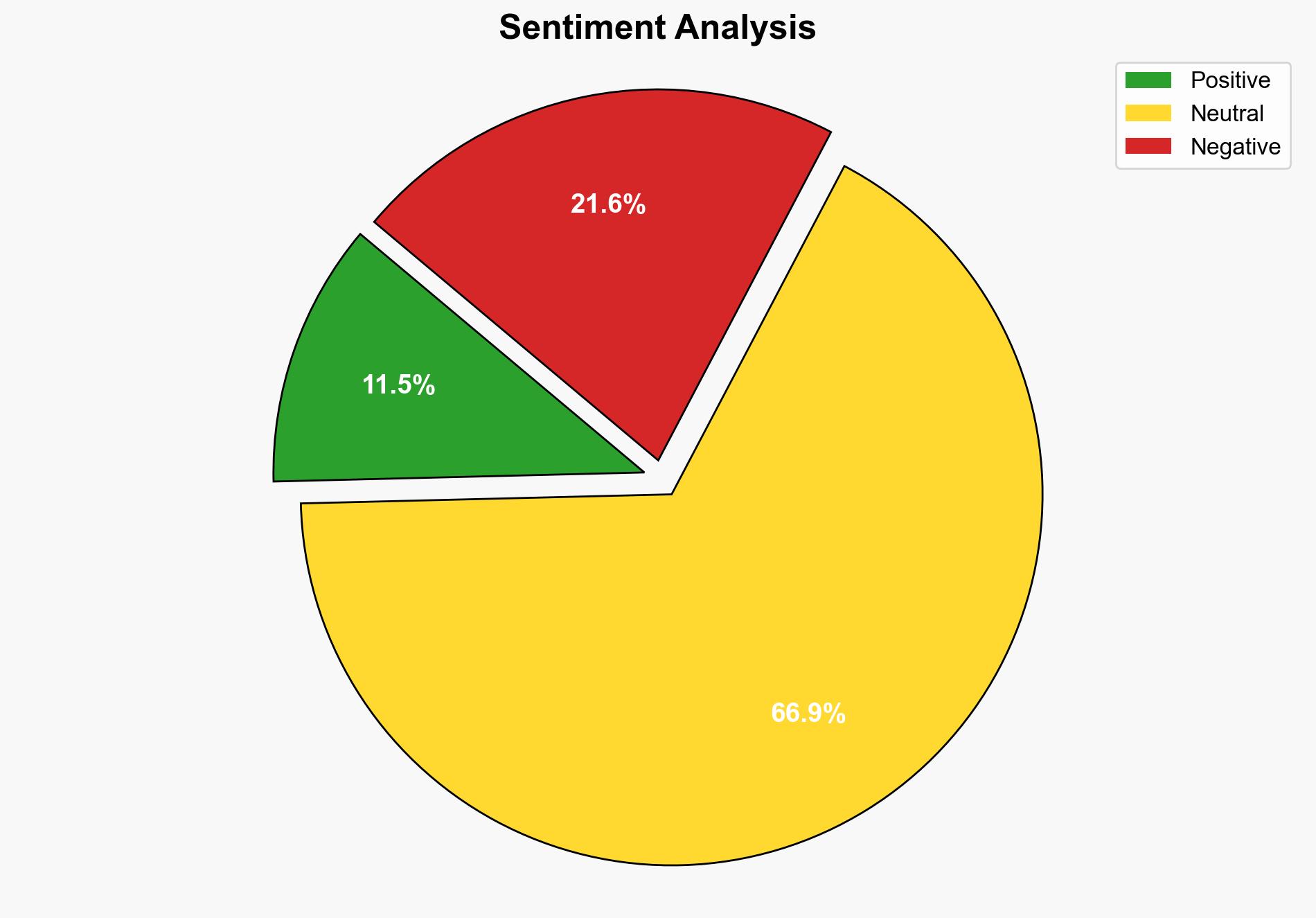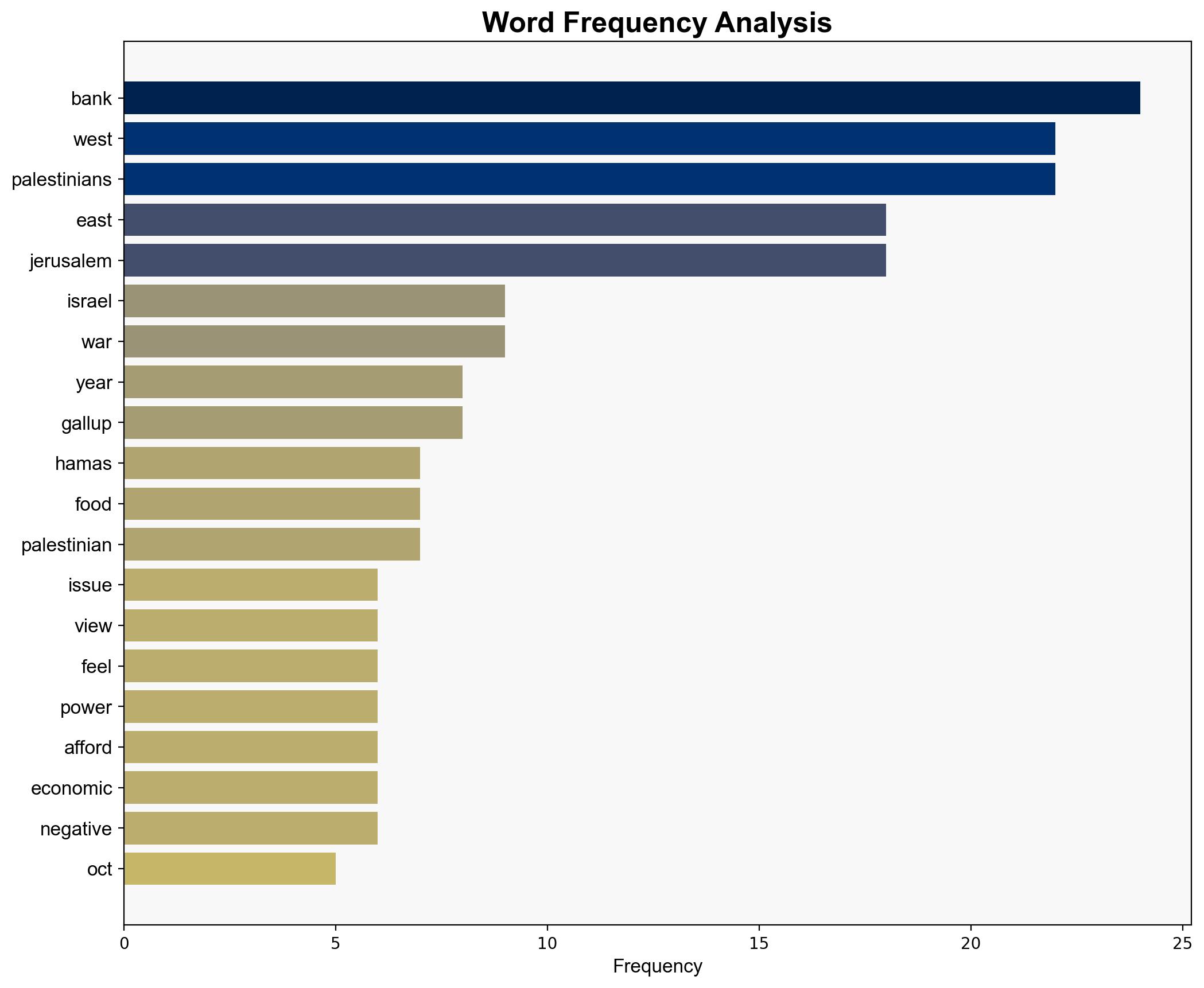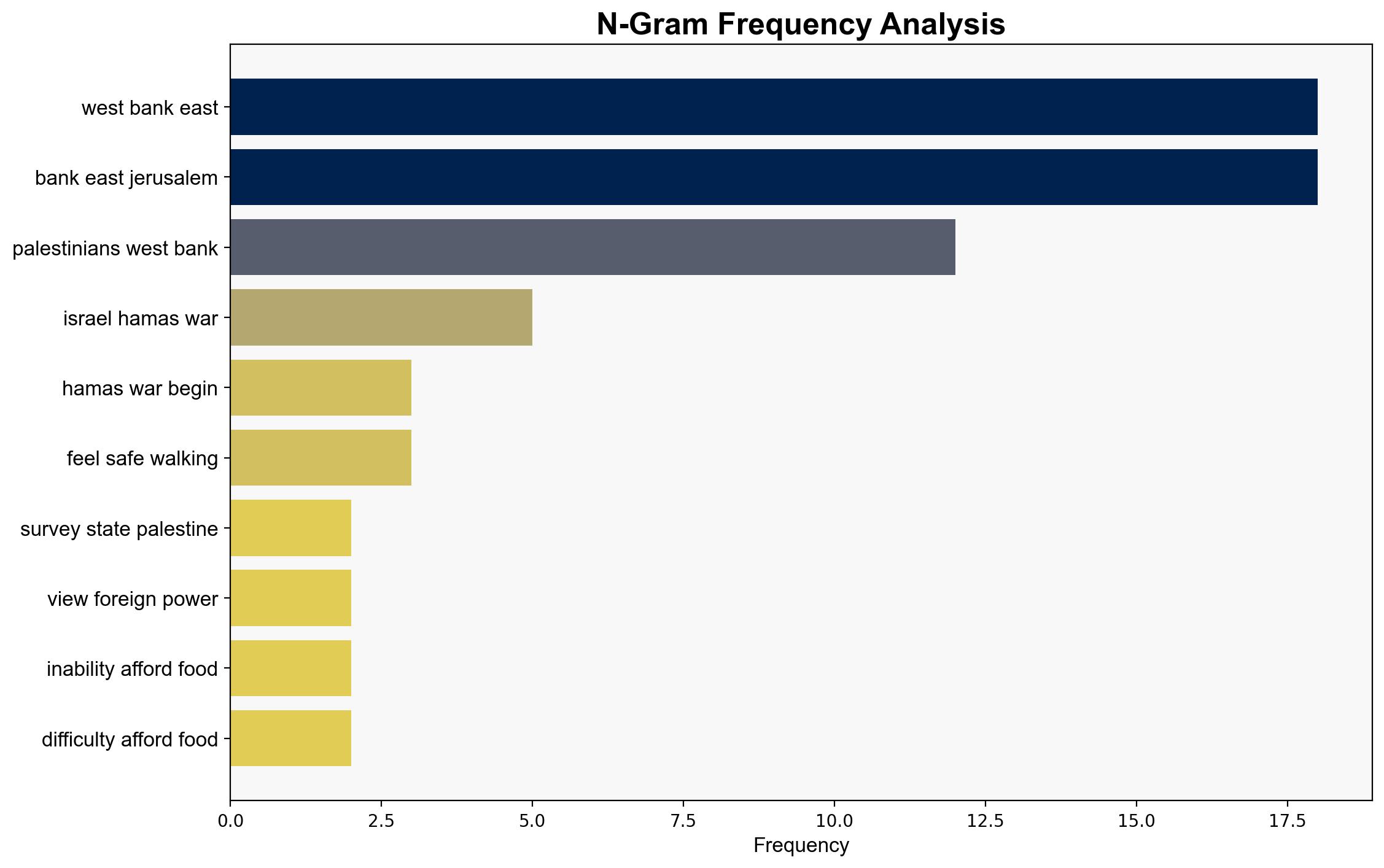West Bank and East Jerusalem Palestinian Life in 7 Charts – Gallup.com
Published on: 2025-09-30
Intelligence Report: West Bank and East Jerusalem Palestinian Life in 7 Charts – Gallup.com
1. BLUF (Bottom Line Up Front)
The analysis suggests a high confidence level in the hypothesis that the socio-economic challenges faced by Palestinians in the West Bank and East Jerusalem are exacerbated by ongoing conflict and restrictive policies. The recommended action is to pursue diplomatic engagement to alleviate economic hardships and improve security conditions. This report uses structured analytic techniques to evaluate the situation.
2. Competing Hypotheses
1. **Hypothesis 1**: The socio-economic difficulties of Palestinians in the West Bank and East Jerusalem are primarily due to external factors, such as the Israeli military operations and restrictions on movement and access to resources.
2. **Hypothesis 2**: Internal governance issues within Palestinian territories, including economic mismanagement and political instability, are the primary contributors to the socio-economic challenges faced by Palestinians.
Using ACH 2.0, Hypothesis 1 is better supported by the data, which highlights the impact of military activity and movement restrictions on economic conditions and personal safety.
3. Key Assumptions and Red Flags
– **Assumptions**: It is assumed that the data from Gallup accurately reflects the current sentiments and conditions in the West Bank and East Jerusalem. Another assumption is that external factors have a more significant impact than internal governance issues.
– **Red Flags**: The exclusion of data from Gaza presents a potential blind spot. Additionally, the reliance on survey data may not capture the full complexity of the socio-political dynamics.
4. Implications and Strategic Risks
The ongoing conflict and economic downturn could lead to increased instability and potential escalation of violence. The psychological impact, evidenced by rising negative emotions, may fuel further unrest. Geopolitically, these conditions could strain relations between Israel and neighboring countries, complicating peace efforts.
5. Recommendations and Outlook
- **Mitigation**: Engage in diplomatic efforts to ease movement restrictions and improve economic conditions. Support initiatives that address basic needs like food and shelter.
- **Opportunities**: Leverage international aid to stabilize the region and promote economic development.
- **Projections**:
– **Best Case**: Successful diplomatic interventions lead to improved economic conditions and reduced tensions.
– **Worst Case**: Escalation of conflict exacerbates economic hardships and leads to increased violence.
– **Most Likely**: Continued economic struggles with intermittent periods of heightened tension.
6. Key Individuals and Entities
No specific individuals are mentioned in the source text. Entities involved include the Israeli government, Palestinian authorities, and international organizations like the World Bank and the World Food Programme.
7. Thematic Tags
national security threats, regional focus, economic instability, humanitarian concerns





